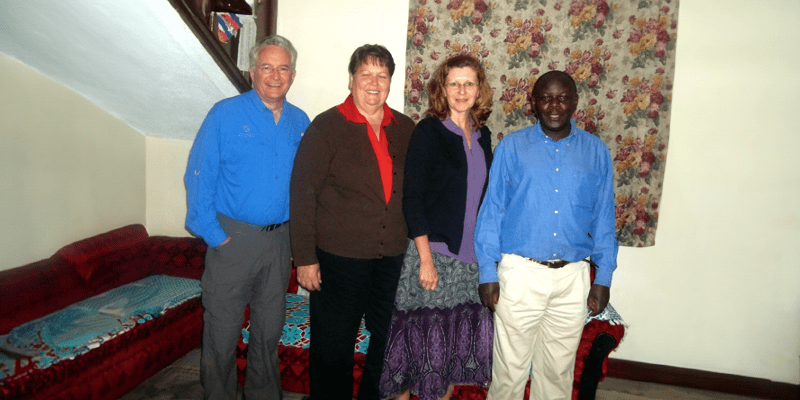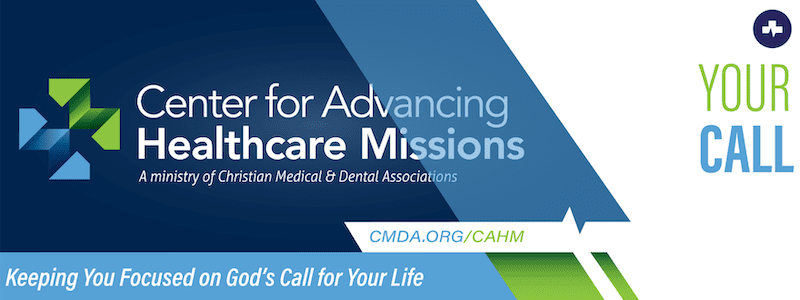
The Long View: Lessons from Tenwek’s Community Health Program
Christian Medical & Dental Associations®
January 15, 2025
by Susan Carter
Today, the Tenwek Community Health and Development (TCHD) program little resembles the original program begun 40 years ago. That is a good thing! The goals of the program haven’t changed, but the strategies certainly have evolved.
The mission of TCHD remains: “To serve Christ by facilitating change through primary healthcare and appropriate development within needy communities.”
Child survival and spiritual ministry formed the initial framework. Training volunteer health helpers, overseen by people in the communities, was the foundation of the conceptualized community health program. Well-baby clinics and ante-natal/post-natal care were also foundational. Beyond that, there was much to learn.
Lesson 1: Do not reinvent the wheel
Find other established programs. Make it a priority to learn from them. Ask them this key question: if you were starting again, what would you be sure to include and what would you avoid? The answers informed our decision to:
- Enter communities through the local government structure rather than church structure (avoids being seen as belonging to a specific church)
- Train health committee members regarding their responsibilities including volunteer supervision (untrained health committees did not function well or long)
- Train lay hospital workers as supervisors to oversee success of committees and health helpers
- Use motor bikes for community travel instead of costly vehicles
- Publicly recognize contributions of health helpers and committee members to improve outputs and outcomes
- Distribute medicines in prepackaged envelopes with instructions and price (Chloroquine was particularly challenging, so all envelopes had age range highlighted.)
Prior to the new program, one half of all hospital admissions and deaths in the hospital were from preventable diseases. During the first six years of the program, 270 volunteer health helpers were trained and supervised by 34 health committees. The 34 villages with health helpers each received a monthly immunization, well baby, ante-natal and post-natal clinic. New committees, health helpers and child/mother clinics were added annually.
TCHD saw observable results early on. Through the first three years of service, determined by a repeat survey, the 157 community health helpers serving 21 communities saw numerous improvements over the baseline survey.
| Community statistics | Baseline survey | Three-year survey |
| Latrines | 18 percent | 54 percent |
| Safe water | 14 percent | 73 percent |
| Raised fireplace | 3 percent | 19 percent |
| Children fully immunized | 15 percent | 47 percent |
| Tenwek Hospital Statistics | Baseline Review | Six-year Review |
| Measles admissions | 427 | 23 |
| Diarrhea admissions | 2230 | 403 |
| Whooping cough admissions | 106 | 3 |
Studies show a practice by 25 percent of a population is sufficient for the practice to become ingrained in the culture. With the above data, it was decided the most active committees required fewer visits by TCHD staff. Over the years, the expanding geographical size of the program dictated the establishment of four satellite offices to oversee ministry in their surrounding communities.
Lesson 2: Sometimes moving forward requires letting go
Longer serving health committees were offered the opportunity to take full responsibility for the health of their communities. This offer came with a two-year training in issues like developing capacity, sustainability, mobilization and bookkeeping. There was some resistance to this decrease in reliance on TCHD, but the “self-reliant” committees eventually proved successful. Each committee wanted to have a clinic site. Through skills taught while releasing the committees, these communities took it upon themselves to appeal to the government for assistance. All self-reliant committees now have a health facility.
Five years in, TCHD decided to address the cost for a family to become healthier. Since subsistence farming was most common, new volunteers were trained in beekeeping for honey production, zero grazing for milk production, seedlings for improved vegetable gardens, poultry keeping for egg production and water collection. A demonstration plot was developed at the hospital where families could come and experience these activities. After a few years, it was decided the demonstration plot was not helpful to community members and was not generating enough income for the program. It closed.
Lesson 3: Willingness to adapt is the life blood of a community program
Wishing to prioritize its spiritual outreach, TCHD decided to train spiritual shepherds, who were church volunteers who would do discipleship in the church. It didn’t take long to realize this effort was going nowhere without the support of church leaders.
Instead, recognizing the biblical role of the church, leaders were trained in the biblical basics for addressing HIV/AIDS, facts about the disease and what other churches were already doing. Each church then identified their local problems in relation to HIV/AIDS and strategized to address them. Ministry to orphans and vulnerable people became an important part of today’s church outreach.
Instead of continuing to act on the program’s idea to improve family income, TCHD began asking communities what they saw as their greatest need. Unsurprisingly, the need for water storage was the most frequent response. TCHD met with some resistance to the idea that a community could help itself. With training and patience, communities began to come up with 25 percent of the budget for their desired project. They also provided labor and construction supplies, such as stone and gravel. Soon 6,000-gallon water tanks were being constructed at primary schools, managed by a trained water committee and overseen by the Ministry of Water. Samaritan’s Purse helped with these projects as well as introducing bio-sand filters (BSF). Tenwek began making and selling BSF to individual families at a reasonable cost.
Another avenue TCHD developed was a revolving loan program for local farmers and businesses. Part of that included giving a cow to a needy family the community identified. The goal commitment was that the first and second calves from that cow would be passed to other families in need.
Although community ownership was important to the program leaders from the beginning, that was not fully realized. Multiple consultants pointed out it was time for sustainability and ownership to be prioritized. Through a people-owned process approach, communities are still improving lives by working together.
Lesson 4: Do not be afraid of donors, you aren’t required to do everything yourself
Little has been said about TCHD finances. The program has had significant funding from international donors. These required significant involvement of personnel and recordkeeping. Evidence-based proof of movement toward objectives was essential for continued funding. Personally, I am a huge proponent of seeking this kind of funding, as the value is much greater than just the dollars. TCHD continues to receive visitors from around the globe, but their words of affirmation, while appreciated, do little to improve the ministry. All donors, when they visited, came with the expectation that things could be improved and offered their suggestions.
The church and Christians in the West are also called to help bring the kingdom of God to people. God can use partners, not to create dependency, but to complement what the people are able to do for themselves. in an expression of God’s love. Don’t be afraid to ask, then make sure to report evidence that their partnership has made a positive difference.
Conclusion
Certainly, the Lord gave His blessings as personnel and friends prayed and sought Him throughout the years. The environment changed significantly over the last 40 years: better education, cell phone proliferation, easier travel and numerous physical and spiritual changes already adopted into the culture. Types and number of government service also increased. These all impacted the program’s need to adapt.
Formation of health committees and training health helpers were the foundational activities of TCHD for a number of years, but they are much less central now. The Kenyan government adopted much of what TCHD was doing, and TCHD is happily working with them. Cheering on people who are helping themselves and encouraging the church to fulfill its biblical mandate is now the focus of TCHD.
Author’s Note: The following should be recognized as well: Joy Phillips, BSN, MPH, and Jonathan Bii, BA (in community development and masters in agricultural marketing management), are TCHD directors who followed me, and respectively contributed. An unpublished work entited Thirty-year History of Tenwek Community Health and Development by Jen Lavery was a great reference as well.
About the Author
After serving two years as a BSN nurse at Tenwek Hospital, Susan felt a call to take health education to the community, since hospital admissions from preventable diseases resulted in one-half of all hospitalizations. She was given responsibility to begin the community health program, along with Dr. David Stevens. Though she loved the community ministry, after 12 years, including one year for MPH training, she was asked to become the hospital CEO. Seven years later, Susan volunteered to step aside so the CEO position could be nationalized. Susan returned to the United States to begin ministry with CMDA, creating the Center for Medical Missions (now the Center for Advancing Healthcare Missions).
“In alert expectancy such as this, we’re never left feeling shortchanged. Quite the contrary—we can’t round up enough containers to hold everything God generously pours into our lives through the Holy Spirit” (Romans 5:4-5, MSG)
Read More“And these are but the outer fringe of his works; how faint the whisper we hear of him! Who then can understand the thunder of his power” (Job 26:14)?
Read More“Not that I was ever in need, for I have learned how to be content with whatever I have. I know how to live on almost nothing or with everything. I have learned the secret of living in every situation, whether it is with a full stomach or empty, with plenty or little. For I can do everything through Christ, who gives me strength” (Philippians 4:11-13, NLT).
Read More“Not that I was ever in need, for I have learned how to be content with whatever I have. I know how to live on almost nothing or with everything. I have learned the secret of living in every situation, whether it is with a full stomach or empty, with plenty or little. For I can do everything through Christ, who gives me strength” (Philippians 4:11-13, NLT).
Read MoreConsultBridge is a non-profit platform connecting frontline healthcare missionaries with specialist doctors for virtual consultations. By providing timely medical expertise in underserved regions, it empowers missionaries to deliver better patient care while specialists contribute their skills from afar.
Read MoreA physician’s journey from Ethiopia’s famine relief to medical teaching in China reflects resilience, faith and service. Through life-saving care, gospel outreach and mentorship, their story highlights enduring hope and the transformative power of compassionate healthcare and ministry
Read MoreIn a tech-saturated world, Dr. Ruth Lindberg explores how constant digital distractions can pull us away from a deeper relationship with Jesus. She offers practical tips for reducing screen time, refocusing our attention and embracing the peace and presence of God.
Read MoreWhen we decided to attempt a public health campaign for pediatric pedestrian safety, we opted for an emphasis on community and solidarity, believing these cultural values were more likely to anchor the message beyond one cycle of road traffic accidents.
Read MoreJust months before the end of our four-year term in Nepal, a young mother died at our hospital. Though our staff did nothing wrong and worked tirelessly to save her, those local leaders took advantage of the situation to foment hostility. Before we knew it, a volatile, angry mob was at our door, making demands and threats.
Read MoreI am a family medicine physician three years out of residency seeking to rejoice in what I am suffering for the sake of His body. I live with my husband and our three young children, with a fourth on the way, in a Central Asian country run by a terrorist group very much in need of the gospel.
Read More
